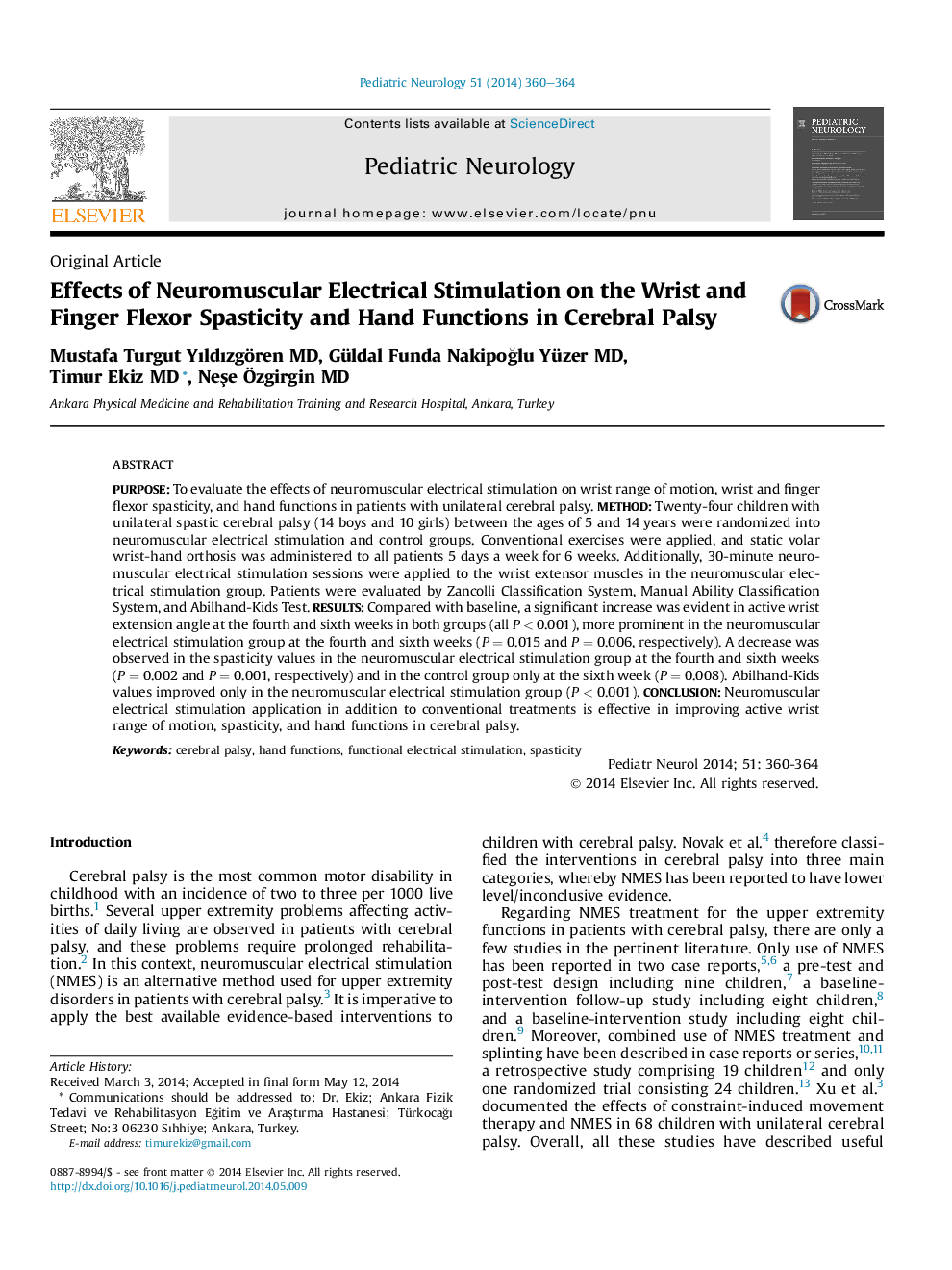| کد مقاله | کد نشریه | سال انتشار | مقاله انگلیسی | نسخه تمام متن |
|---|---|---|---|---|
| 3084623 | 1189775 | 2014 | 5 صفحه PDF | دانلود رایگان |
PurposeTo evaluate the effects of neuromuscular electrical stimulation on wrist range of motion, wrist and finger flexor spasticity, and hand functions in patients with unilateral cerebral palsy.MethodTwenty-four children with unilateral spastic cerebral palsy (14 boys and 10 girls) between the ages of 5 and 14 years were randomized into neuromuscular electrical stimulation and control groups. Conventional exercises were applied, and static volar wrist-hand orthosis was administered to all patients 5 days a week for 6 weeks. Additionally, 30-minute neuromuscular electrical stimulation sessions were applied to the wrist extensor muscles in the neuromuscular electrical stimulation group. Patients were evaluated by Zancolli Classification System, Manual Ability Classification System, and Abilhand-Kids Test.ResultsCompared with baseline, a significant increase was evident in active wrist extension angle at the fourth and sixth weeks in both groups (all P < 0.001), more prominent in the neuromuscular electrical stimulation group at the fourth and sixth weeks (P = 0.015 and P = 0.006, respectively). A decrease was observed in the spasticity values in the neuromuscular electrical stimulation group at the fourth and sixth weeks (P = 0.002 and P = 0.001, respectively) and in the control group only at the sixth week (P = 0.008). Abilhand-Kids values improved only in the neuromuscular electrical stimulation group (P < 0.001).ConclusionNeuromuscular electrical stimulation application in addition to conventional treatments is effective in improving active wrist range of motion, spasticity, and hand functions in cerebral palsy.
Journal: Pediatric Neurology - Volume 51, Issue 3, September 2014, Pages 360–364
